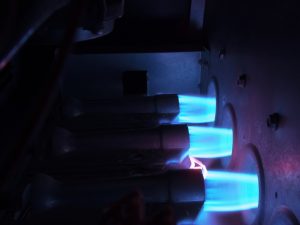The modern gas furnace is built to work as safely as possible. The combustion of natural gas can create dangers from toxic gases like carbon monoxide and from flames escaping from the combustion chamber. But when furnaces are well-maintained, they rarely cause problems for homes. If they did, they wouldn’t be permitted in residential buildings in the first place.
The furnace that warms your house during the winter has several safety mechanisms built into it, such as the flame rollout switch and the flame sensor. One of the key safety components is the furnace limit switch, and we’re going to look at this vital part of your furnace today.
The Purpose of the Furnace Limit Switch
One potential danger with a gas furnace is that it can overheat. The way your furnace creates heat is by combusting natural gas along burners. The heated gas from the flames enters into a metal chamber called the heat exchanger, and the heat through the metal walls transfers to the air sent through the furnace by the blower and into the rooms.
What the limit switch does in this process is handle turning the blower fan on and off in conjunction with the thermostat. The burners turn on first as the heating cycle starts, and once the limit switch has determined the heat exchanger is hot enough, it activates the blower fan to begin moving air through the furnace and into the rest of the house. When the house reaches the temperature on the thermostat, the thermostat will turn the burners off—but the limit switch will still keep the blower running while the temperature of the heat exchanger remains 20° above the temperature in the house. This removes the heat from the exchanger. Once the exchanger cools down enough, the limit switch turns the blower off.
The limit switch, therefore, helps the thermostat and furnace to work together while also preventing the furnace from overheating. If the blower shut off at the same time as the burners, the heat exchanger would stay too hot. In addition, the limit switch will shut off the burners if it detects the temperature of the heat exchanger has risen too high. The most common cause of a furnace overheating is when the blowers fail, so the limit switch is monitoring two important parts of the furnace to keep them operating safely.
Limit Switch Problems
A furnace’s limit switch can malfunction and need professionals to replace it. Two signs to watch for that will warn the limit switch may be broken: the furnace is running nonstop or the blower fan will not turn on even when the burners do.
You don’t want to continue to run your furnace with a broken limit switch, so please shut the furnace off at its main switch and call our team for repairs. Please don’t attempt to do a DIY replacement of the limit switch—if it’s done wrong, the furnace can become more dangerous. Our team is ready to help you with 24-hour emergency service.
Contact Bartels Heating & Cooling “For a Comfortable Way of Life”!

